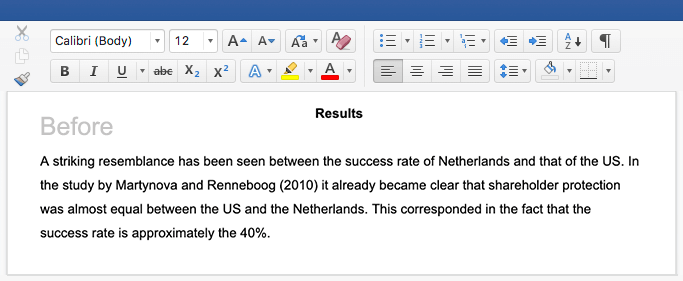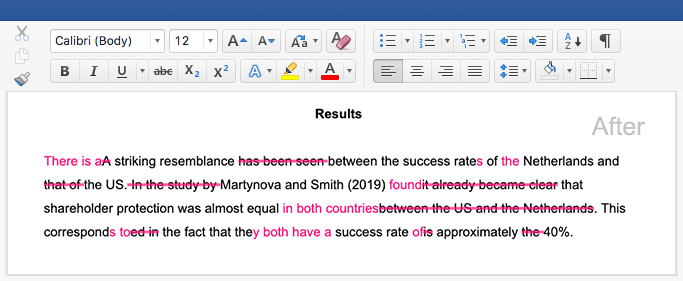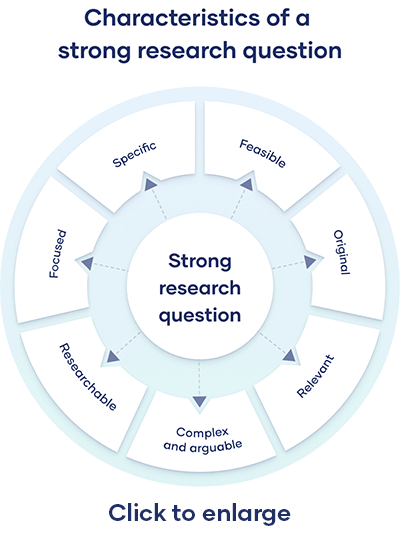How to Choose a Dissertation Topic | 8 Steps to Follow
Choosing your dissertation topic is the first step in making sure your research goes as smoothly as possible. When choosing a topic, it’s important to consider:
- Your institution and department’s requirements
- Your areas of knowledge and interest
- The scientific, social, or practical relevance
- The availability of data and resources
- The timeframe of your dissertation
You can follow these steps to begin narrowing down your ideas.
Step 1: Check the requirements
The very first step is to check your program’s requirements. This determines the scope of what it is possible for you to research.
- Is there a minimum and maximum word count?
- When is the deadline?
- Should the research have an academic or a professional orientation?
- Are there any methodological conditions? Do you have to conduct fieldwork, or use specific types of sources?
Some programs have stricter requirements than others. You might be given nothing more than a word count and a deadline, or you might have a restricted list of topics and approaches to choose from. If in doubt about what is expected of you, always ask your supervisor or department coordinator.
Step 2: Choose a broad field of research
Start by thinking about your areas of interest within the subject you’re studying. Examples of broad ideas include:
- Twentieth-century literature
- Economic history
- Health policy
Step 3: Look for books and articles
To get a more specific sense of the current state of research on your potential topic, skim through a few recent issues of the top journals in your field. Be sure to check out their most-cited articles in particular. For inspiration, you can also search Google Scholar, subject-specific databases, and your university library’s resources.
As you read, note down any specific ideas that interest you and make a shortlist of possible topics. If you’ve written other papers, such as a 3rd-year paper or a conference paper, consider how those topics can be broadened into a dissertation.
Step 4: Find a niche
After doing some initial reading, it’s time to start narrowing down options for your potential topic. This can be a gradual process, and should get more and more specific as you go. For example, from the ideas above, you might narrow it down like this:
- Twentieth-century literature Twentieth-century Irish literature Post-war Irish poetry
- Economic history European economic history German labor union history
- Health policy Reproductive health policy Reproductive rights in South America
All of these topics are still broad enough that you’ll find a huge amount of books and articles about them. Try to find a specific niche where you can make your mark, such as: something not many people have researched yet, a question that’s still being debated, or a very current practical issue.
At this stage, make sure you have a few backup ideas – there’s still time to change your focus. If your topic doesn’t make it through the next few steps, you can try a different one. Later, you will narrow your focus down even more in your problem statement and research questions.
Step 5: Consider the type of research
There are many different types of research, so at this stage, it’s a good idea to start thinking about what kind of approach you’ll take to your topic. Will you mainly focus on:
- Collecting original data (e.g., experimental or field research)?
- Analysing existing data (e.g., national statistics, public records, or archives)?
- Interpreting cultural objects (e.g., novels, films, or paintings)?
- Comparing scholarly approaches (e.g., theories, methods, or interpretations)?
Many dissertations will combine more than one of these. Sometimes the type of research is obvious: if your topic is post-war Irish poetry, you will probably mainly be interpreting poems. But in other cases, there are several possible approaches. If your topic is reproductive rights in South America, you could analyse public policy documents and media coverage, or you could gather original data through interviews and surveys.
You don’t have to finalise your research design and methods yet, but the type of research will influence which aspects of the topic it’s possible to address, so it’s wise to consider this as you narrow down your ideas.
Step 6: Determine the relevance
It’s important that your topic is interesting to you, but you’ll also have to make sure it’s academically, sociallym or practically relevant to your field.
- Academic relevance means that the research can fill a gap in knowledge or contribute to a scholarly debate in your field.
- Social relevance means that the research can advance our understanding of society and inform social change.
- Practical relevance means that the research can be applied to solve concrete problems or improve real-life processes.
The easiest way to make sure your research is relevant is to choose a topic that is clearly connected to current issues or debates, either in society at large or in your academic discipline. The relevance must be clearly stated when you define your research problem.
Step 7: Make sure it’s plausible
Before you make a final decision on your topic, consider again the length of your dissertation, the timeframe in which you have to complete it, and the practicalities of conducting the research.
Will you have enough time to read all the most important academic literature on this topic? If there’s too much information to tackle, consider narrowing your focus even more.
Will you be able to find enough sources or gather enough data to fulfil the requirements of the dissertation? If you think you might struggle to find information, consider broadening or shifting your focus.
Do you have to go to a specific location to gather data on the topic? Make sure that you have enough funding and practical access.
Last but not least, will the topic hold your interest for the length of the research process? To stay motivated, it’s important to choose something you’re enthusiastic about!
Step 8: Get your topic approved
Most programmes will require you to submit a brief description of your topic, called a research prospectus or proposal.
Remember, if you discover that your topic is not as strong as you thought it was, it’s usually acceptable to change your mind and switch focus early in the dissertation process. Just make sure you have enough time to start on a new topic, and always check with your supervisor or department.
Frequently asked questions
Cite this Scribbr article
If you want to cite this source, you can copy and paste the citation or click the ‘Cite this Scribbr article’ button to automatically add the citation to our free Reference Generator.
McCombes, S. & George, T. (2022, November 11). How to Choose a Dissertation Topic | 8 Steps to Follow. Scribbr. Retrieved 28 October 2025, from https://www.scribbr.co.uk/the-research-process/choosing-a-topic/



